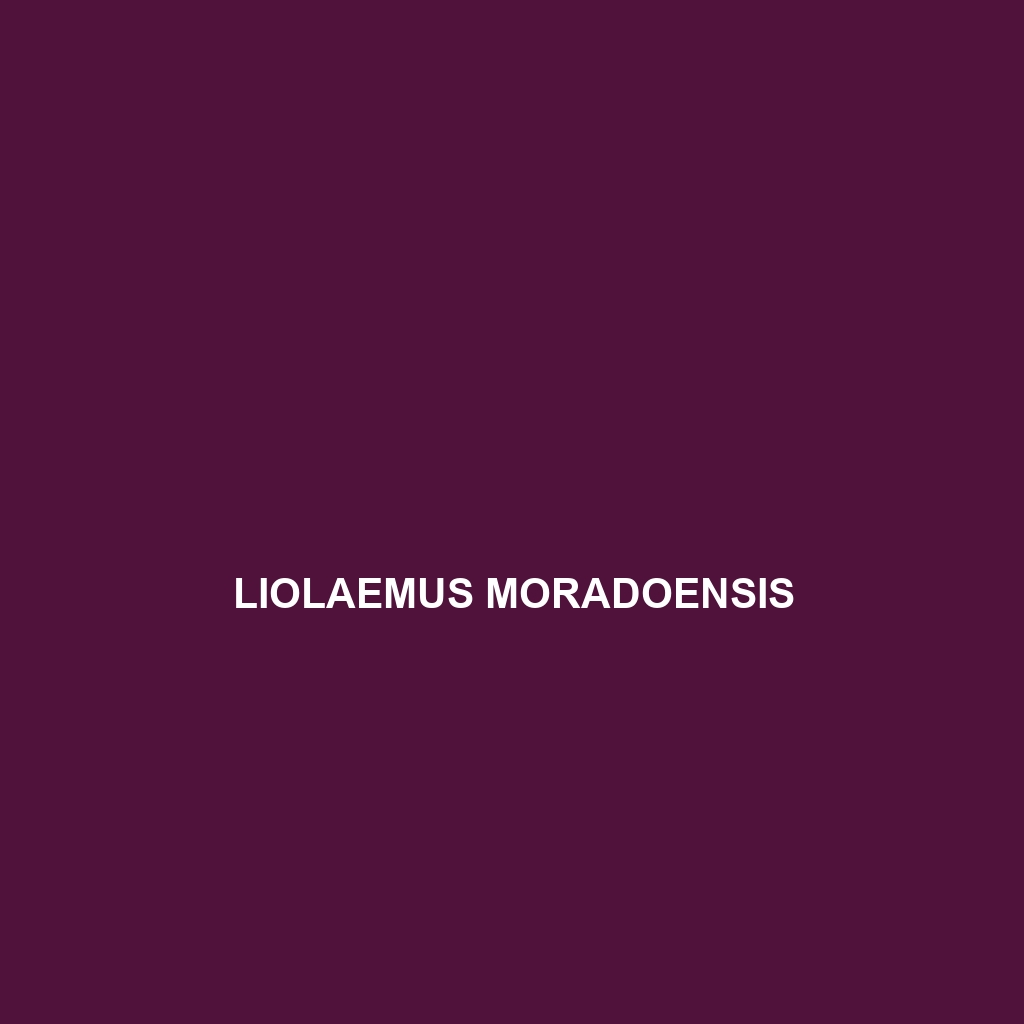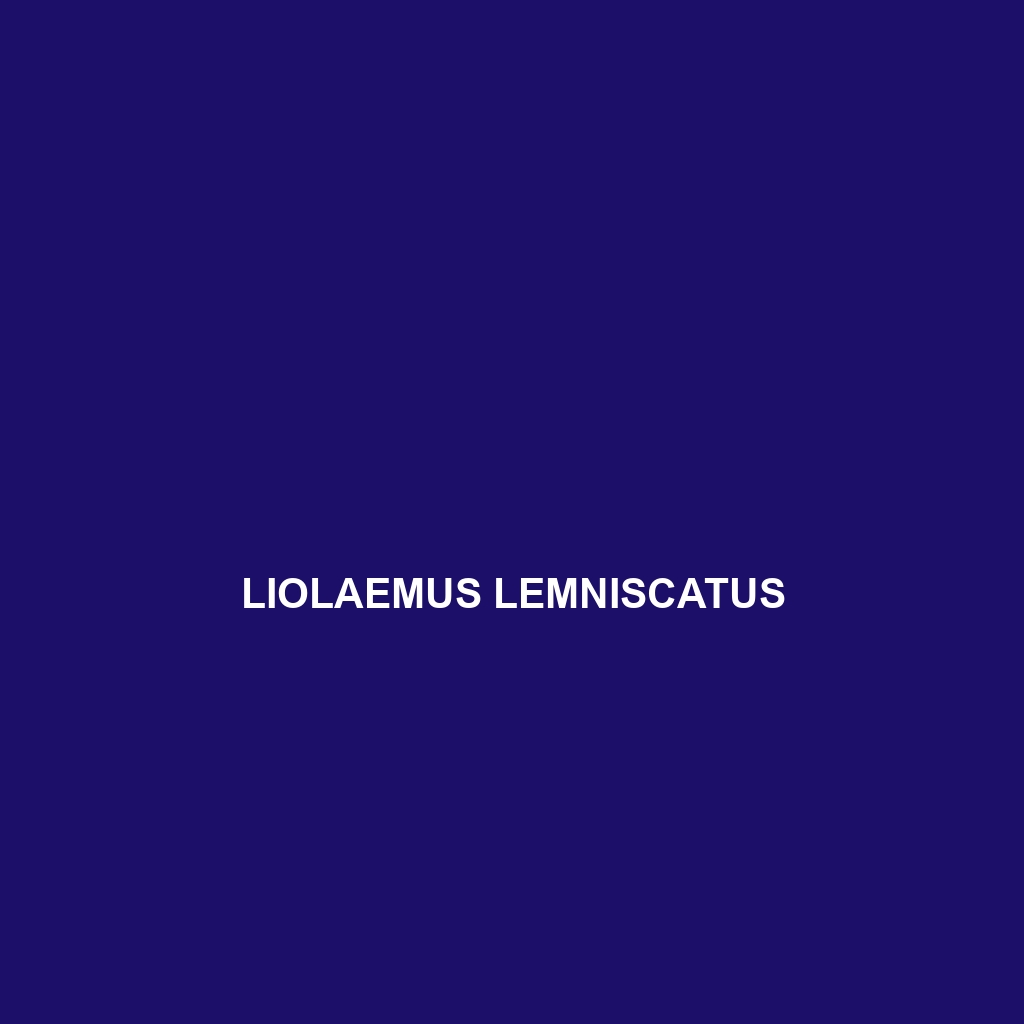<p><b>Liolaemus multiformis</b> is a striking lizard species native to the temperate forests and savannas of South America, particularly in the Andes. Ranging from 10 to 20 cm, these diurnal reptiles exhibit vibrant colors and intricate patterns while playing a crucial role in their ecosystems by controlling insect populations and serving as prey for larger animals.</p>
Tag: Liolaemus
Liolaemus moradoensis
Discover the fascinating Liolaemus moradoensis, a medium-sized lizard native to the temperate forests and mountainous regions of central Chile, known for its distinctive light brown coloration with darker spots and its impressive climbing abilities. This omnivorous species plays a vital role in its ecosystem by regulating insect populations and contributing to soil health, while also facing vulnerabilities due to habitat loss and climate change.
Liolaemus molinai
<p><b>Liolaemus molinai</b>, a distinctive lizard native to the rocky terrains of the Andes in Argentina, measures 15-20 cm and exhibits vibrant coloration for camouflage and communication. Known for its diurnal behavior and primarily insectivorous diet, this fascinating species plays a crucial role in maintaining ecological balance.</p>
Liolaemus loboi
<p><b>Liolaemus loboi</b> is a striking lizard native to the temperate regions of Argentina and Chile, recognized for its slender body, vibrant color patterns, and diurnal behavior. This insectivorous species plays a crucial role in its ecosystem by regulating insect populations and is currently classified as vulnerable due to habitat loss.</p>
Liolaemus lenzi
Discover the captivating Liolaemus lenzi, a resilient lizard thriving in southern South America's temperate forests and savannas. With its striking coloration, agile behavior, and essential role in regulating insect populations, this fascinating species is a vital indicator of ecosystem health.
Liolaemus leftrarui
<p><b>Liolaemus leftrarui</b> is a vulnerable lizard species native to the temperate forests of southern South America, recognized for its unique coloration and diurnal behavior. Thriving in montane grasslands, it plays a vital ecological role as both predator and prey, primarily feeding on insects while exhibiting fascinating social structures and reproductive traits.</p>
Liolaemus lemniscatus
Discover the captivating Liolaemus lemniscatus, a vibrant lizard native to the temperate forests and savannas of Chile and Argentina, characterized by its striking golden-yellow lateral stripe and unique adaptability to diverse habitats. This diurnal omnivore plays a vital role in its ecosystem by controlling insect populations and supporting plant biodiversity.
Liolaemus juanortizi
<br><b>Liolaemus juanortizi</b>, a distinctive lizard from the Andes of Argentina and Chile, features a slender body measuring 15-20 cm, with brown and gray coloration for camouflage. This diurnal insectivore plays a vital role in its ecosystem as a predator of insects and contributes to ecological balance while exhibiting vibrant mating displays during the breeding season.
Liolaemus hajeki
<p><b>Liolaemus hajeki</b>, a striking lizard native to the temperate forests and high-altitude regions of southern South America, measures 7 to 10 centimeters in length and showcases vibrant earthy tones for excellent camouflage. This insectivorous species exhibits fascinating behaviors, engaging in social interactions and elaborate mating displays, while playing a crucial role in its ecosystem by controlling insect populations and serving as prey for larger animals.</p>
Liolaemus fitzgeraldi
Discover the intriguing Liolaemus fitzgeraldi, a diurnal lizard native to the temperate forests of southern Chile and Argentina, recognized for its moderate size of 10 to 15 cm, vibrant camouflage patterns, and vital role in regulating insect populations while adapting robustly to its mountainous environment. This unique species exhibits interesting behavioral patterns during its breeding season, contributing to its resilience in diverse ecosystems.









